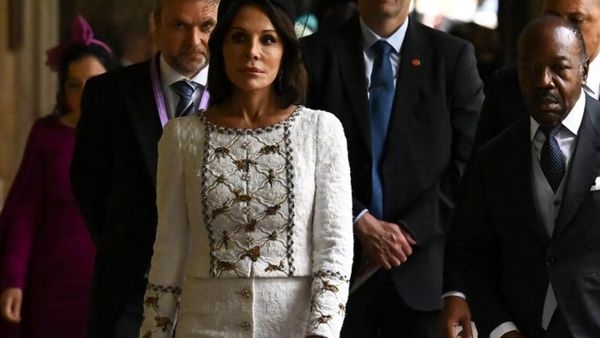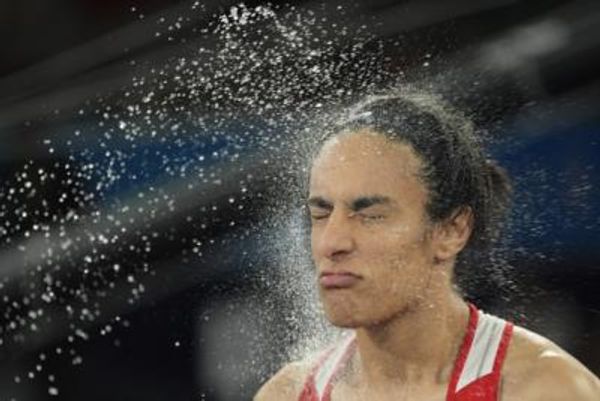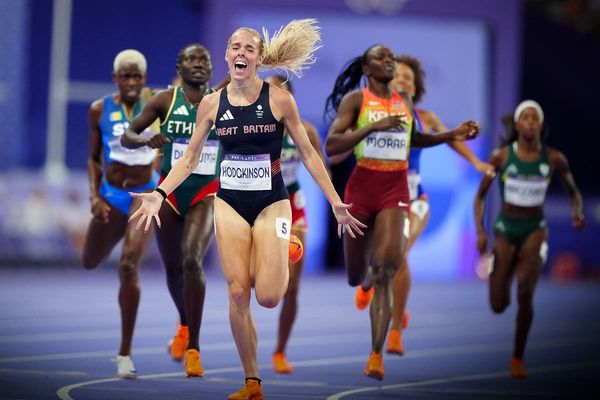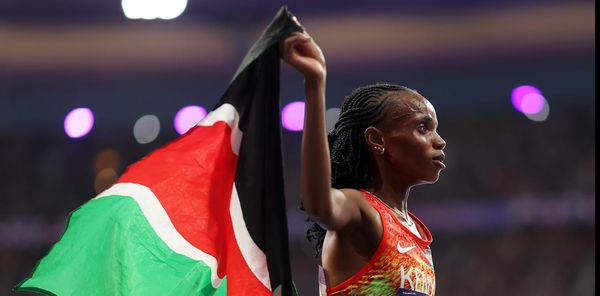
Reflecting on women’s sport at the Paris Olympics leaves me feeling torn. Parity was proudly announced in numbers of male and female athletes and it was an important milestone. Though it’s hardly reassuring it took 124 years since women debuted, also in Paris.
There were some incredible highs, such as Keely Hodgkinson’s scintillating performance on the track, Sky Brown’s fearless skateboarding and Emma Finucane’s impressive debut in the velodrome. The athlete of the Games could arguably be Sifan Hassan, who won bronze in the 5,000m and 10,000m and then gold in the marathon, with the medal ceremony a feature of the closing ceremony. Or Simone Biles, who took gymnastics to new heights and showed that can be done while having fun and cheering on your competitors, moving on from the sport’s abusive history.
But there were lows too, particularly the boxing fiasco, with the International Olympic Committee’s male leaders, with so much power and authority, out of their depth in understanding what it means to protect the female category in sport.
A look beyond the athletes reveals further gaps. Parity in coaching remains far off. Just 13% of coaches at the Tokyo Olympics in 2021 were women and that number is thought to have decreased in Paris. UK Sport has made concerted efforts to support the development of female coaches and numbers have doubled, but that’s from 10%. If you look at other roles – officials, judges and leadership positions or look at the banks of photographers or camera operators – you realise the scale of the mountain still to climb.
Further challenges lie beyond. Sports science has traditionally centred on males, resulting in deeply embedded systemic biases. In 2023, 8% of sports science research was done exclusively on women. Given women’s experiences of sport in recreational and elite environments are affected by menstrual cycles, periods and differences in skeletal structure, along with different life changes through puberty, fertility, pregnancy, postnatal experiences and menopause, much more is needed to support women in sport.
Female athletes are more visible than ever, which helps. What can’t be seen can’t be addressed. Several have spoken publicly about natural performance factors previously ignored, with Jazmin Sawyers, Dina Asher-Smith and Eilish McColgan flagging the effects of periods on cramps and injuries in competition. Hodgkinson highlighted the lack of research on contraception’s effects on women in sport.
The former US runner Allyson Felix has fought for maternity rights for female athletes with sponsors and launched the first creche in the Olympic village in France. There were nine mothers in Team GB in Paris and seven won medals. Each has pioneered how to combine motherhood and elite competition, but as the rower Helen Glover highlighted, support is needed to make that process easier for those who follow. Most other mothers wanting to be active are likely to have much less support.
At least we are starting to acknowledge some known unknowns. The UK Sports Institute (UKSI) is leading overdue research and starting conversations among athletes, coaches and staff in high-performance sport around menstrual cycles and their possible effects. Manchester Metropolitan University (MMU) worked with the UKSI to research hormones and nutrition to better understand Red-S (relative energy deficiency in sport), which has damaged many women’s sporting careers.
MMU and the UKSI are developing a global hub for research, education and applied practice in female health and performance to support elite athletes and wider public health.
Three brilliant women – coach Baz Moffat, sport scientist Emma Ross and GP Bella Smith at The Well HQ, a consultancy for female health in sport – are doing their share of heavy lifting to expose where systemic change is needed to enable women to take part in sport. They have highlighted gaps in education, coaching, kit, equipment, knowledge, research and funding.
It can be as simple or complex as finding a sports bra that fits. One study showed that a correctly fitted one could affect running performance by up to 7% with changes in stride length, muscle fatigue, injuries and the perception of effort, which affects pacing. A study of athletes at the Tokyo Games discovered the majority didn’t know the best sports bra to wear for their sport.
Sports equipment manufacturers have only recently begun to realise that women’s bodies are not simply small men and there are uncomfortable persistent aesthetic differences in sports clothing with huge social implications. When Nike released its Paris track and field kit, there was a furore over the continued contrast: women wore a high-cut leotard or bikini while the men wore shorts and singlets. It is doubtful men forego a performance advantage for the sake of modesty.
The recurrence of anterior cruciate ligament injuries in women’s football has generated plenty of uninformed speculation. Moffat calls this the canary in the coalmine that reveals a bigger system failing women. She highlights multiple interrelated systemic factors including poorer playing surfaces, a gender play gap that means fewer young girls kick a ball about in the garden or park building up agility early, less access to physiotherapy or nutritional advice, football boots that are not yet made for women’s feet, the unknown impact of hormones on sport and less well-developed pathways to elite levels.
The parallels in all sports are clear. England Netball, British Cycling and the Football Association have set up pioneering partnerships with The Well to create sustainable change – it is on most sports’ agendas, but progress feels too slow.
So let’s salute all those who have been part of progress in women’s sport, in Paris and in our communities. But let’s also look at our schools, clubs and sports centres and question governing bodies, sports manufacturers and government ministers to redouble all efforts and ambitions to reach a deeper level of parity in sport.
• This article was amended on 16 August 2024 because an earlier version muddled the details of Bella Smith and Emma Ross from The Well HQ. Smith is a GP and Ross a sport scientist, not the other way round; a misspelling of Emma Ross’s first name has also been corrected.










